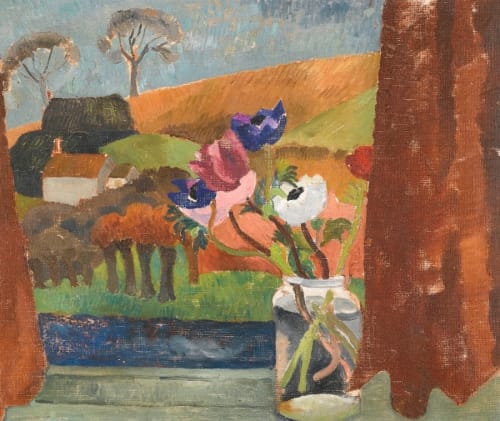Christopher Wood was born near Liverpool in 1901, and despite an early interest at Liverpool University in architecture and medicine, decided to become a painter. This was in part due to having met an encouraging Augustus John at Liverpool. Wood was invited to Paris in 1920 by Alphonse Kahn, and studied at the Académie Julian in the following year. He met many contemporary luminaries there, including Cocteau, Diaghilev, and Picasso.
Between 1922 and 1924, Wood travelled around North Africa and Europe. Nonetheless, he also returned to paint in Wiltshire, where his father had a general medical practice. In 1926 he created (unused) designs for the Ballets Russes and for Constant Lambert. He also became a member of the Seven and Five Society and the London Group in this year, and befriended the Nicholsons. Ben and Winifred were very supportive, and the three artists painted and exhibited together, at the Beaux Arts Gallery in 1927. In 1929, he painted seascapes in Brittany, works that are generally acknowledged to be his finest. In this year he had a solo exhibition at Tooth’s Gallery, where he met one of his biggest artistic supporters, the gallery owner Lucy Wertheim. In 1930, Wood seemed to be beginning to make the turn towards Surrealism, painting Zebra and Parachute and Tiger and the Arc de Triomphe.
However, Wood’s career was cut short by psychosis and addiction – in August 1930, he threw himself under a train at Salisbury station.

